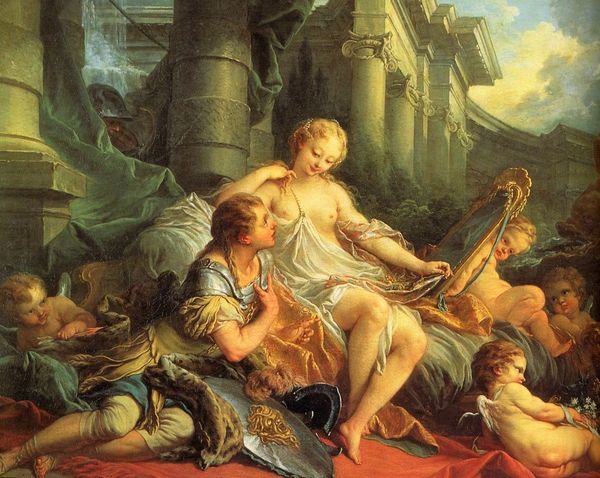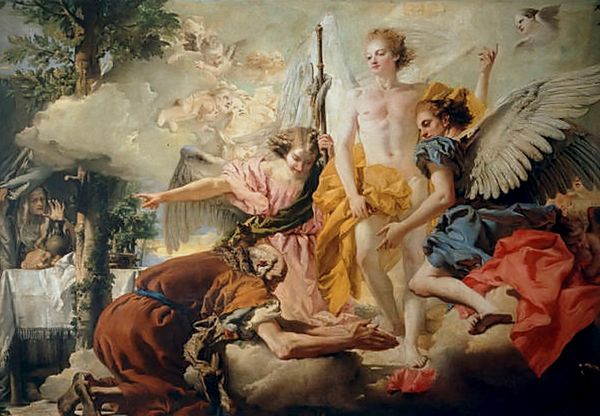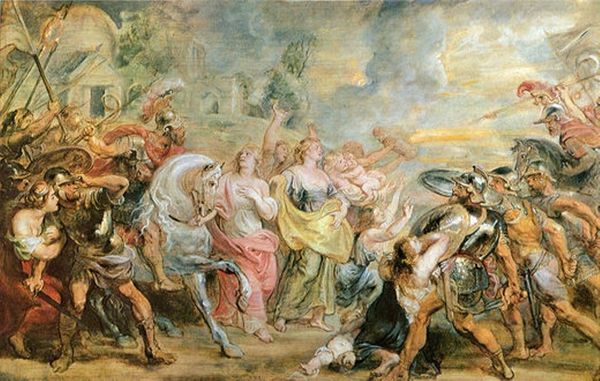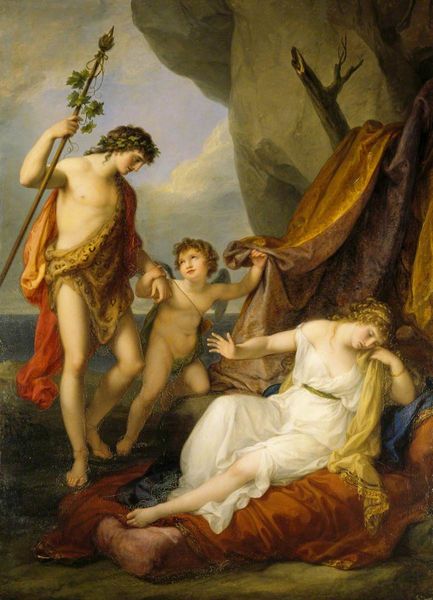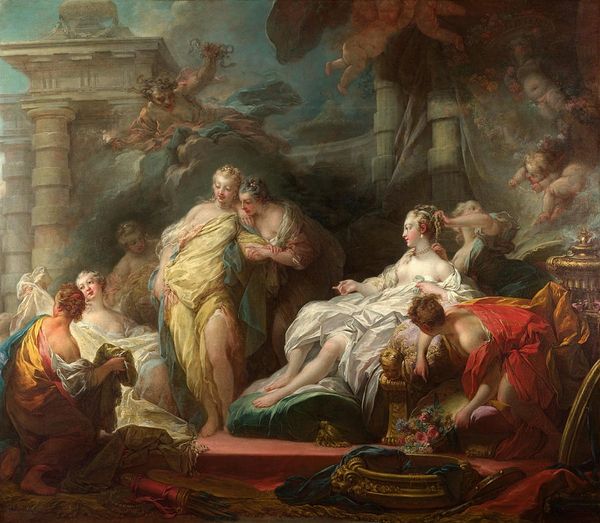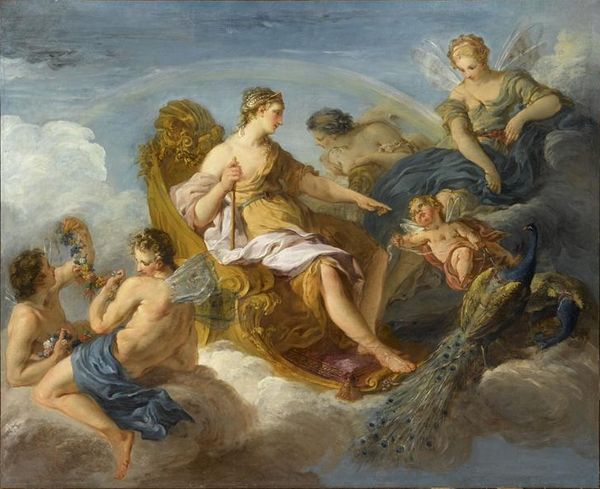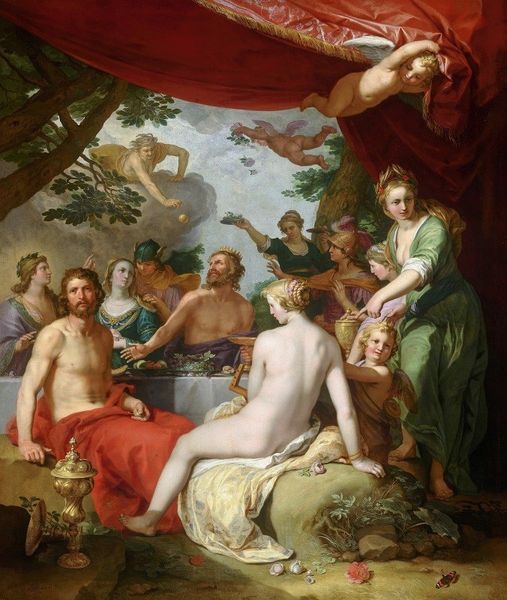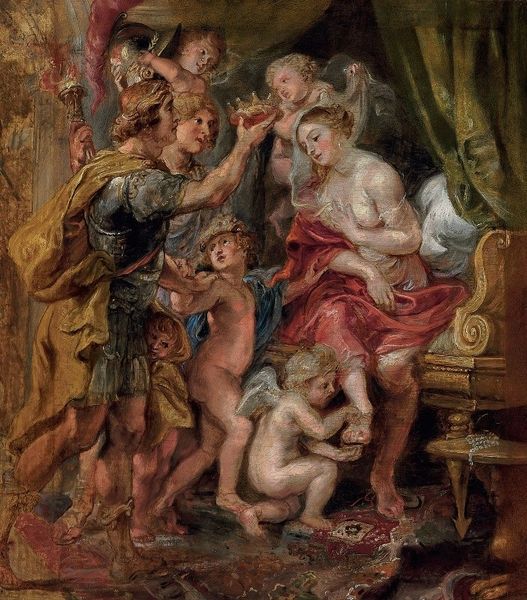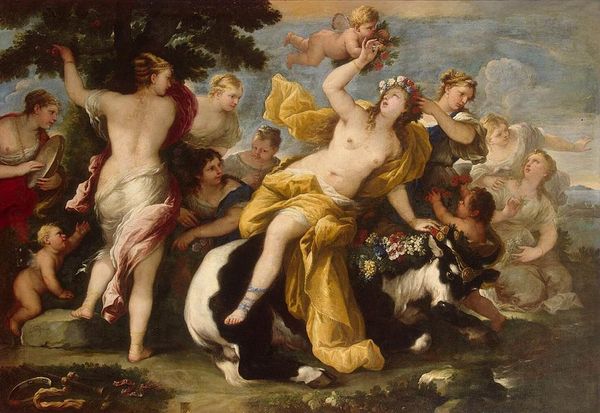
painting, oil-paint
#
allegory
#
painting
#
oil-paint
#
figuration
#
oil painting
#
mythology
#
genre-painting
#
nude
#
portrait art
#
rococo
Dimensions: 135 x 170 cm
Copyright: Public domain
Curator: Welcome. We’re standing before François Boucher's “Rinaldo and Armida,” an oil painting completed in 1734. What are your immediate impressions? Editor: It feels like a decadent stage production. The hazy, soft light and the poses strike me as deeply performative, like these figures are consciously playing out roles. It's all so meticulously arranged, like a tableau vivant about desire and power. Curator: Precisely. Note how Boucher utilizes a complex pyramidal composition, anchoring the figures to one another using glances and gestures. This visual strategy draws the eye to the interplay of textures, from Armida's flowing gown to the hard armor of Rinaldo. Semiotically, it’s very sophisticated. Editor: Absolutely. But that's also where I start to feel conflicted. Armida, the sorceress, is clearly positioned as the dominant figure, literally trapping the warrior Rinaldo with her allure. Yet, the entire scene hinges on her seductive power, which feels rooted in male fantasy and ultimately reinforces patriarchal norms. Look at the cupid figures; even their presence feels exploitative. Curator: While your point about patriarchal norms is duly noted, consider Boucher's facility with color and form. Observe the cool blues and greens contrasted with the fleshy pinks, creating a dynamic tension that mirrors the push and pull between these characters. The figures' idealized forms are clearly rendered to depict a timeless version of desire. Editor: But "timeless desire" can easily excuse perpetuating harmful stereotypes. Doesn’t it strike you how even Rinaldo's discarded armor and pose reinforce the narrative of male conquest thwarted by female wiles? The art reinforces the era's restrictive gender dynamics rather than interrogating them. What does that mean? Curator: Such tensions exist within the Rococo style itself. Its superficial playfulness served the interests of the aristocracy on the eve of revolution. Perhaps in Boucher's art, there is a parallel. I appreciate your insights into this work through contemporary theory and feminist critique. Editor: And I see that analyzing the composition gives critical insight into how a narrative like this might have functioned for Boucher's audience.
Comments
No comments
Be the first to comment and join the conversation on the ultimate creative platform.
